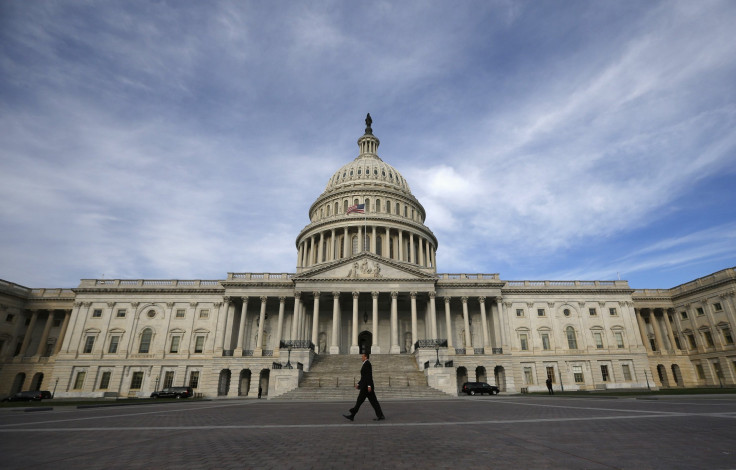U.S. Government Shutdown: Antarctic Research Program And 5 Other Shuttered Science Programs

The partial U.S. government shutdown has not only brought into question lawmakers’ competency, but it’s also shuttered a number of federally funded programs from the National Park Service to the U.S. Centers for Disease Control and Prevention. Among the casualties is the U.S. Antarctic Program, a summer field research endeavor that ground to a halt on Tuesday.
The National Science Foundation, or NSF, was forced to put its three Antarctic scientific stations on standby, launching the program into maintenance-only mode and sending scientists and contractors stationed there home, Discovery News reports.
"All field and research activities not essential to human safety and preservation of property will be suspended,” the U.S. Antarctic Program said in a statement, according to AFP.
The work of 1,200 scientists assigned to hundreds of different projects there will be scrubbed. Daily Finance notes that a skeleton staff of just a few people will stay behind to take care of the facilities during the shutdown.
Scientists in Antarctica usually start their research in October, when the southern spring brings warmer weather. But because the NSF won’t be able to fund its field research, a number of projects will have to be put on the shelf.
According to the Los Angeles Times, that includes a 20-year census of the Adélie penguin, a species of penguin only found along the Antarctic coast. Then there’s the WISSARD drilling expedition, which involves probing a hidden estuary beneath the Ross Ice Shelf. Scientists will have to curtail the $10 million project until next year.
"The loss of this season's programs, some planned over many years, is unprecedented and tragic for both the Antarctic community and our understanding of the Antarctic region and its changing environment," Professor Peter Barrett, from Victoria University's Antarctic Research Centre in Wellington, told AFP.
Sorry, scientists, but your important data gathering will have to wait until your congress can get its act together.
Here are five more ways the government shutdown is hurting science.
Radio telescopes had their lights turned off. The National Radio Astronomy Observatory, or NRAO, powered down three of its telescopes last Friday, Oct. 4. About 385 NRAO employees were put out of work.
One of the telescopes forced into hibernation was the giant ALMA, located in Chile. The $1.3 billion telescope can peer deeper into long-wavelength millimeter light than any other instrument on Earth, according to Space.com.
Telescopes like ALMA are important for exploring a wide range of subjects, like how galaxies and stars behave and how the universe originated.
And shutting these massive research facilities down isn’t as easy as flipping an “off” switch. The facilities contain a lot of sensitive equipment, like cryogenically cooled electronics. Putting them to sleep will take a lot of time and care.
Climate agenda put on the backburners. The Environment Protection Agency, or EPA, said goodbye to 94 percent of its employees earlier this month. The more than 16,000 furloughed EPA employees handled everything from air quality to industrial waste. But those endeavors have been interrupted.
"It stinks," John O'Grady, a union representative at the EPA's Chicago office, told The Guardian. "No one is going to be out inspecting water discharges, or wet lands. Nobody is going to be out inspecting waste water treatment plants, drinking water treatment plants or landfills – nothing. None of that is going to be done. The employees are absolutely devastated."
Most notably, the EPA was working to set the first limits on power plant carbon emissions, a huge part of Obama’s climate change agenda. That, too, will have to wait.
Basic biomedical research is on the chopping block. “I don’t think the public realizes the devastating impact that this has on scientific research,” one government biomedical scientist, who remained anonymous, told Wired. “Scientific research is not like turning on and off an assembly line … You can’t just stop and restart it. You’ve probably just destroyed the experiment.”
He explained that experiments, including those involving test rats, are long-term, and involve specific timetables and treatments.
There are also major delays in reviewing and rewarding new federal grants for scientific research. With 95 percent of its staff furloughed, the National Science Foundation, which funds basic research in computer science, engineering, atmospheric science and other disciplines, can’t financially support new projects.
Study of crop-eating stinkbug curtailed. U.S. crops are in danger from a pesky -- and smelly -- critter called brown marmorated stinkbug. The invasive bug has no natural predator and can chew through crops like termites do with wood. The U.S. Department of Agriculture, or USDA, has deemed the stinkbug its top “invasive insect of interest,” and is looking for ways to counter its voracious appetite.
Red Orbit reports that in September, the USDA asked homeowners to look for and count stinkbugs on their properties and to submit their findings to a website specifically set up to track the stinkbug population. Because of the government shutdown, the organization can no longer conduct its research.
NASA space projects grounded. According to Scientific American, work on a number of NASA’s projects has ceased because of the shutdown. For one, the Stratospheric Observatory for Infrared Astronomy, a Boeing 747 airplane with a 2.7-meter telescope sticking out of a hole in its side, was forced to land at its home base in Palmdale, Calif.
"We're losing time," Tom Jones, a veteran of four spaceflights, told SPACE.com. "[The shutdown is] not going to endanger operations on the space station, but if it continues for more than a couple of weeks then you're going to have a significant amount of lost time, productivity and planning for the next stage of space station research, for example.”
© Copyright IBTimes 2024. All rights reserved.






















